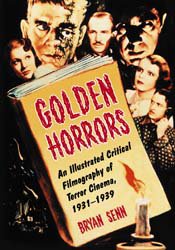 Stop-motion animation has long been perceived as a technical practice rather than a creative, demanding art. Though stop-motion requires considerable technical knowledge, it also involves aesthetics and artistry that go beyond the technician’s realm. Just as important as puppet mechanics are lighting, filters, lenses, camera angle and placement, and dramatic pose and movement.This manual is a complete guide to the aesthetics of stop-motion animation. Information is organized in an intuitive, easy-to-use structure, following the order an animator uses in setting up and then executing a scene. The first half concentrates on the aesthetics of lighting and cameras, a primary concern in any shot, with details of camera placement, various lenses and myriad lighting techniques. The second half deals with the process of performance art, an oft-overlooked aspect of stop-motion animation. Included is a commentary on body language, facial expression, gesture, movement and emotion—key concepts that are exemplified through the acting process. The work also offers an introduction to narrative form and a glossary of related terms.
Stop-motion animation has long been perceived as a technical practice rather than a creative, demanding art. Though stop-motion requires considerable technical knowledge, it also involves aesthetics and artistry that go beyond the technician’s realm. Just as important as puppet mechanics are lighting, filters, lenses, camera angle and placement, and dramatic pose and movement.This manual is a complete guide to the aesthetics of stop-motion animation. Information is organized in an intuitive, easy-to-use structure, following the order an animator uses in setting up and then executing a scene. The first half concentrates on the aesthetics of lighting and cameras, a primary concern in any shot, with details of camera placement, various lenses and myriad lighting techniques. The second half deals with the process of performance art, an oft-overlooked aspect of stop-motion animation. Included is a commentary on body language, facial expression, gesture, movement and emotion—key concepts that are exemplified through the acting process. The work also offers an introduction to narrative form and a glossary of related terms. Psycho Thrillers-
Psycho Thrillers- By William Indick
Mind control, madness and altered states of reality can make for exciting nights at the movies—which explains the enduring popularity of a film genre that might be called the psycho thriller. Psychiatry and film came of age simultaneously, and characters such as the evil psychiatrist and the pathological killer were often developed in direct reference to the psychological themes that inspired them. For example, the penchants of Hitchcock’s famously creepy Norman Bates represented real psychological disorders, and his actions were explained through psychoanalysis. The psycho thriller presents a world where psychology represents a dimension of supernatural and metaphysical wonders.The introduction analyzes what makes a psycho thriller, and subsequent chapters are devoted to each of the archetypal psycho thriller characters (the mad scientist, the psycho killer, the individual with psychic powers, and the psychiatrist) and themes (mind control, dreams, memory, and existential issues). The concluding chapter lists the top twenty psycho thrillers. Stills from classic films in the genre illustrate the text, which also includes filmography, bibliography, and index.
 Following The Fugitive-
Following The Fugitive-
Mind control, madness and altered states of reality can make for exciting nights at the movies—which explains the enduring popularity of a film genre that might be called the psycho thriller. Psychiatry and film came of age simultaneously, and characters such as the evil psychiatrist and the pathological killer were often developed in direct reference to the psychological themes that inspired them. For example, the penchants of Hitchcock’s famously creepy Norman Bates represented real psychological disorders, and his actions were explained through psychoanalysis. The psycho thriller presents a world where psychology represents a dimension of supernatural and metaphysical wonders.The introduction analyzes what makes a psycho thriller, and subsequent chapters are devoted to each of the archetypal psycho thriller characters (the mad scientist, the psycho killer, the individual with psychic powers, and the psychiatrist) and themes (mind control, dreams, memory, and existential issues). The concluding chapter lists the top twenty psycho thrillers. Stills from classic films in the genre illustrate the text, which also includes filmography, bibliography, and index.
 Following The Fugitive-
Following The Fugitive- By Bill Deane
The Fugitive made its debut on ABC on September 17, 1963. Over the next four seasons, the show enjoyed enormous commercial and critical success. Millions of fans followed the heroic exploits of Dr. Richard Kimble (David Janssen) as he eluded police lieutenant Philip Gerard (Barry Morse) and doggedly pursued the killer of his wife, the notorious one-armed man. The show has experienced recent renewed interest since the 1993 movie of the same name became such a box-office smash and video favorite. The coverage is episode-by-episode, giving title, cast lists, director, writer, original airdate, and a comprehensive plot synopsis.
By Bryan Senn
From the grindhouse oddities to major studio releases, this work details 46 horror films released during the genre’s golden era. Each entry includes cast and credits, a plot synopsis, in-depth critical analysis, contemporary reviews, time of release, brief biographies of the principal cast and crew, and a production history. Apart from the 46 main entries, 71 additional “borderline horrors” are examined and critiqued in an appendix.








No comments:
Post a Comment